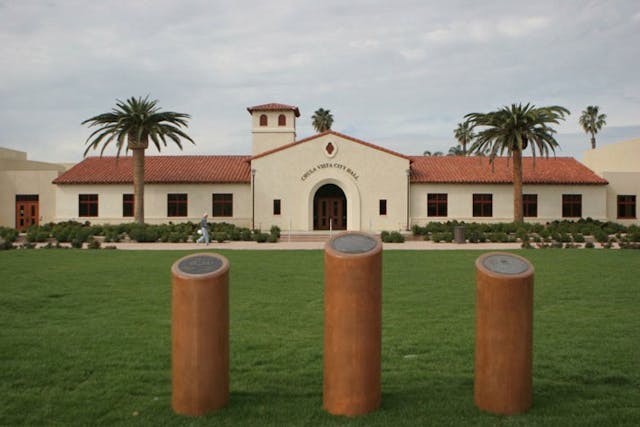En La Boca Del Lobo Series: Not Just Another Telenovela
A review by Mark R. Day

The escape of drug kingpin Joaquin Chapo Guzman is focusing attention on Mexico’s corrupt officialdom, but a look at the history of Colombia’s drug cartels shows how pervasive that corruption can be in a society.
That’s why En La Boca del Lobo, an 80 part television series (yes, 80!) is fascinating to watch. It’s a joint venture of Sony Television, Univision and Telecet, Colombia’s largest production company.
“Boca” may use the telenovela format, but it’s no soapy melodrama. Rather, it has the dramatic impact of a True Detective, The Sopranos. or Boardwalk Empire.
The series, available on Netflix, is well written, well produced, well shot and expertly performed, utilizing the best of Colombia’s acting talent. It helps if the viewer knows Spanish, but the subtitles work well and don’t distract from the film.
The story of the rise and fall of the infamous Cali drug cartel in Colombia (1977-1998), Boca is based on the book, At the Devil’s Table, by William Rempel, a former Los Angeles Times investigative reporter.
Rempel’s book reads like a movie script. It’s tightly written, with sharply edged characters, full of cliff hangers, suspense, and rich with background information.
Rempel spent weeks interviewing Jorge Salcedo, an engineer who reluctantly allowed himself to be recruited into the Cali cartel as a military and technical adviser. He spent six harrowing years with the Cali mobsters. In the end Salcedo handed himself over to U.S. authorities as Colombian special forces and U.S. Drug Enforcement (DEA) agents closed in on Cali’s head godfather, Manuel Rodriguez Orejuela, and his inner circle.
What kept me glued to the series was the fascinating story of how the drug kingpins related to each other, their underlings, their women, their enemies, and the corrupt officials they bribed, often with gift wrapped packages stuffed with hundreds of thousands of U.S. dollars.
The Cali traffickers differed from Pablo Escobar’s Medellin cartel in that they shied away from violence in the beginning, investing heavily in their community. They owned 40 percent of Cali’s real estate and participated in community projects. Everyone knew what they were up to, but financial prosperity kept them quiet.
Escobar, however, relied on terrorism and assassinations of government officials to get his way. It was at the height of this violence that Orejuela, the Cali cartel’s top boss, recruited Salcedo.
Known as “Ricardo” in the television series, Salcedo was motivated to help Orejuela and his fellow godfathers because of their vow to kill Escobar, their chief competitor, and clearly Colombia’s top public enemy.
Manuel and his brother Gilberto’s rush to eliminate Escobar, however, led to faulty preparations and two bungled assassination attempts that ended in disaster for the Cali cartel.
The first was an aerial and bombing assault on Hacienda Napoles, Escobar’s mountain hideaway. The plan was to conduct the raid with three helicopters and a fixed wing surveillance aircraft. One of the copters failed to materialize, so they overloaded a second, causing it to crash in the jungle, killing the pilot and seriously injuring the crew.
The second raid was on La Catedral, a special prison that held Escobar after he negotiated a so called “surrender” to the Colombian authorities. The attack involved the purchase of a light bomber plane and bunker bombs from El Salvador.
That plot failed as well. The bomber never arrived, and Ricardo’s cover was blown, exposing him to arrest by Colombian and Salvadoran authorities.
As time went on, Ricardo graduated from a communications expert to the head of the Cartel’s security. Though he avoided any direct involvement in drug trafficking and violence, he knew too many secrets and realized it would be almost impossible to escape with his family.
Eventually, the Cali godfathers exposed him to their ways of dealing with suspected snitches. He was forced to attend the torture and execution of a campesino who had allowed his ranch to be used by Escobar’s henchmen for an attack on Cali cartel members. And later Ricardo would witness the grisly slaughter of a group of Panamanians suspected of spying for the D.E.A.
After Colombian army officers killed Pablo Escobar in an apartment house raid, Ricardo felt it was his time to resign from the Cali cartel. But Orejuela would not hear of it.
When he ordered Ricardo to help assassinate Guillermo Pallomari, the cartel’s chief accountant, for security breaches, Ricardo decided to quit. He made contact with two U.S drug enforcement agents stationed in Colombia, convincing them he could lead them to Orejuela.
That led to a raid on an apartment building. But when the DEA agents and Colombian special forces were within inches of grabbing Orejuela, a corrupt Colombian commander called a halt to the operation.
Meanwhile, Ricardo worked as a double agent, assuring Orejuela that he was looking out for his interests but simultaneously leaking information to the DEA.
Eventually, a clandestine assault on another apartment building struck gold. The DEA and Colombian special forces finally arrested Orejuela, putting a stranglehold on the Cali cartel.
At this point, Ricardo narrowly escaped capture from Orejuela’s assassins. And just before the DEA helped him flee with his family to Miami, Ricardo saved the life of the accountant Pallomari who got witness protection in the U.S. His treasure trove of documents put the final nails in the coffin of the Cali cartel.
In the end, Orejuela and his partners get what they feared the most—extradition to a maximum U.S. prison without parole until 2030.
In the end, Jorge Salcedo offers a piece of advice to anyone considering a job with drug traffickers: “If you are invited, stop and run away. Don’t think you can ever fully escape.”
Mark R. Day is a journalist, filmmaker, and labor activist. He lives in Vista, Calif. mday700@yahoo.com



 Arturo Castañares
Arturo Castañares


